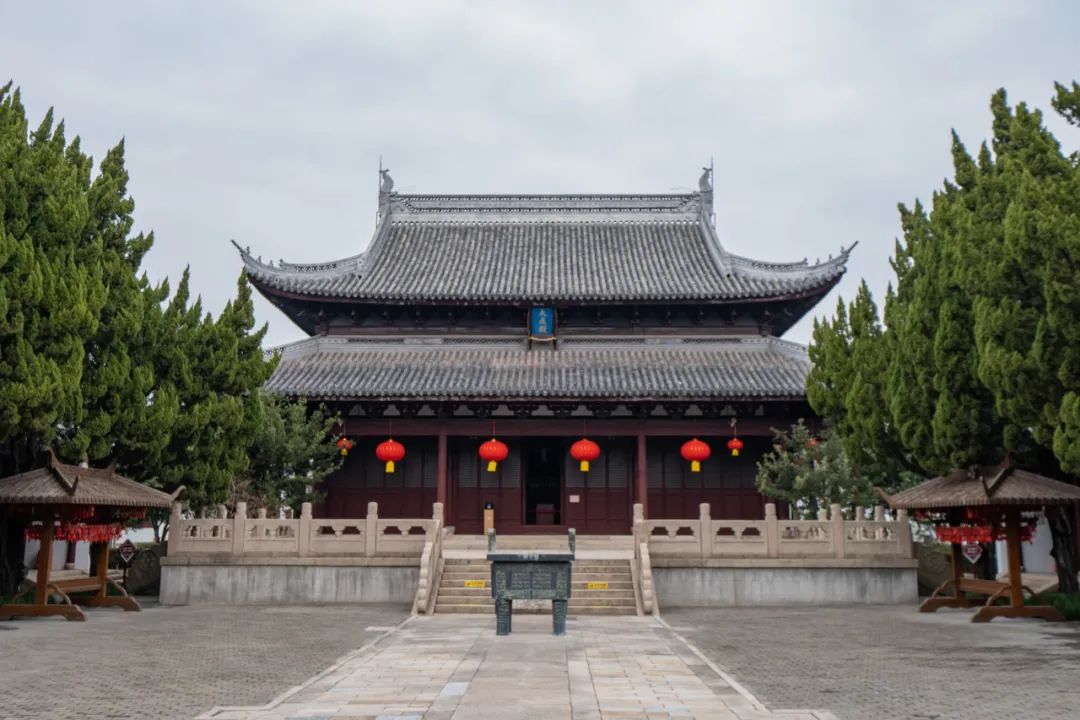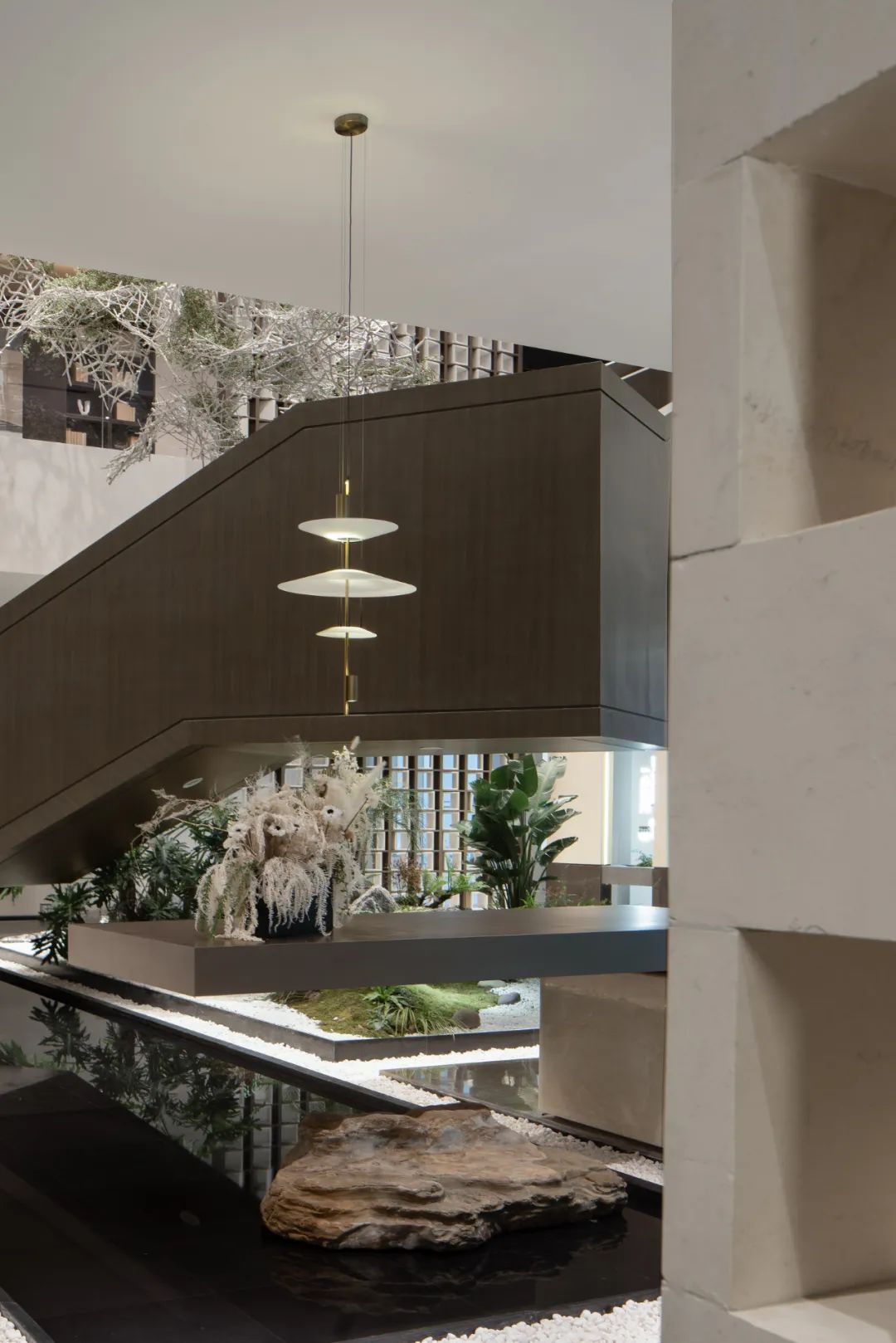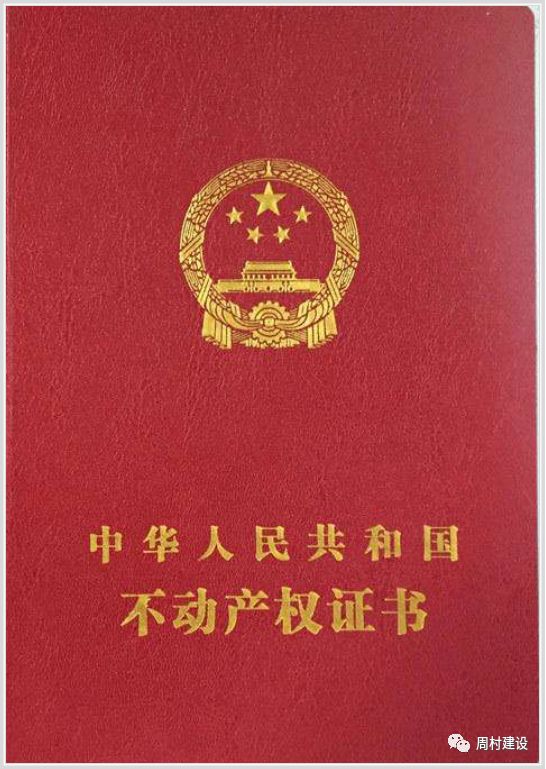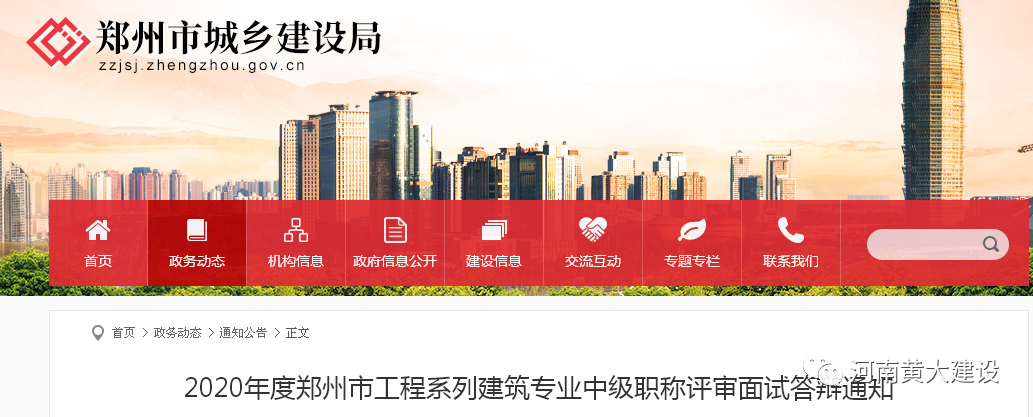From ancient times to the present, Chongming academy not only shows the world its unique function of spreading Chinese traditional culture and cultivating excellent talents, but also provides aesthetic space for modern people to appreciate Chinese classical architecture, so that people can truly feel the superb skills and intelligence of ancient craftsmen in China
. 
Today, let’s walk into the largest Confucius Temple in Shanghai
. 
The ancient buildings of Chongming academy have a long history of more than 400 years
. 
Chongming Academy was first built in 1327, the fourth year of the reign of emperor TAIDING of the Yuan Dynasty, and then moved many times with the county government, Located at No
. 
696, Aoshan Road, Chengqiao Town, Chongming District, the current Chongming academy, built in 1622, has a history of nearly 400 years
. 
It is one of the only three Confucius temples in Shanghai and the largest one in Shanghai
. 
It now covers an area of 23.21 mu, including East West archway, lingxingmen, panchi, dengyunqiao, East West official hall, Jimen, Minghuan temple, Xiangxian temple, Dacheng hall, east west two verandas, Zunjing Pavilion, Chongsheng temple, Confucianism gate, Yimen, Minglun hall, Xuehai hall, Zhongyi Xiaoti temple, Tang zhaoer temple, Shen Zhongjie temple, Yingzhou academy, etc
. 
Chongming academy is now the site of Chongming District Museum
. 
Relying on the ancient buildings of Chongming academy, the museum is open to the outside world
. 
There are two basic exhibitions in the Museum: “history of Chongming Island” and “Chongming folk custom”
. 
In 2016, with the overall completion of the reconstruction project of the ancient buildings along the West axis of the Chongming school palace, the Museum of Chongming District successively launched thematic exhibitions such as “ancient Ying heritage, advocating culture and education”, “culture to transform people, determined to prosper the country”, “defending the hundred Islands outside, three Wu with internal obstacles”, as well as permanent exhibitions such as “model of all ages: the life of Confucius” and “Yingzhou good villager” The museum is basically on display
. 
Chongming Academy was announced as a cultural relic protection unit of Shanghai by Shanghai Municipal People’s Government in 1984, and was selected as one of the 100 local cultural symbols in Shanghai by public vote and expert evaluation in 2016
.
It is the only cultural building with symbolic significance selected by Chongming
.
Now it is the base of patriotism education in Shanghai
.
From 1371 to 1643, Chongming academy held 89 imperial examinations
.
There were 31 candidates for the Chongming imperial examination and 4 candidates for the Zhongjin imperial examination
.
Among them, there were four candidates for the Wuxu, Jiachen, Dingchou and Xinsi imperial examinations in Chenghua and one candidate for the Chongming imperial examination in each subject
.
In the 112 imperial examinations held from 1646 to 1904, there were 119 candidates and 32 Jinshi candidates in Chongming, including one candidate in each of the four imperial examinations in Shunzhi and 13 candidates in Kangxi
.
In the history of the plan of Chongming Academy during the reign of Emperor Qianlong of the Qing Dynasty, there were many outstanding people who took the road from Chongming academy to imperial examination
.
In the late Ming Dynasty, Shen TingYang, the navigator and right servant of the Ministry of war, song Deyi, the great Bachelor of Wenhua palace in the Qing Dynasty, he Zhuo, one of the four great masters in the early Qing Dynasty, Shen Wenhao, the academic envoy of Tanhua and Shanxi governor, Bai Qian, the examiner of Fujian and the lecturer of Changshu Youwen Academy in the Qing Dynasty, and Wang Qingmu, the businessman and Youcheng of the Ministry of Commerce in the late Qing Dynasty
.
In order to protect and inherit the historical context, Chongming academy carried out a large-scale, systematic and continuous overall restoration at the end of the 20th century, which has continued to this day
.
Chongming Academy in the 1990s in 1991, Chongming County included “restoration of Chongming academy” in the eighth five year plan of Chongming in the government work report
.
In September of the same year, the Shanghai Municipal Administration of cultural relics allocated funds to renovate the ancient buildings in Chongming academy, such as Zunjing Pavilion, Chongsheng temple, East West official hall, etc
.
After 1994, the people’s Government of Chongming County and the Shanghai Municipal Administration of cultural relics, through repeated consultation and expert argumentation, drew a blueprint for the comprehensive restoration of Chongming academy, and carried out the restoration in stages according to phase I, phase II and phase III
.
From November 1996 to December 1997, the first phase of the aerial photography project of Chongming academy restored the main building Dacheng hall, East and West veranda, corridor and platform, and rebuilt the 500m ancient wall, thus laying a solid foundation for the whole restoration of Chongming Academy
.
From December 1998 to October 1999, the second phase of the project renovated the East and West memorial archways, lingxingmen, panchi, dengyunqiao, dongxiguanting, halberd gate, zunjingge, chongshengci and other ancient buildings of the Academy, making all the ancient buildings belonging to the Confucian temple on the central axis of the academy a new one
.
In 2000, the Chongming County Government added five blue stone statues of Confucius, Yan Hui, Zeng Shen, Kong long and Meng Ke to the palace, which were respectively placed on the terrace in front of the Dacheng hall and on both sides of the corridor
.
On September 27, on the occasion of the 2551st anniversary of the birth of Confucius, the completion ceremony was held
.
From April 2001 to June 2002, the third phase of the statue of Confucius in Dacheng hall restored the Ming Lun hall, Yi men, stele gallery and other ancient buildings, and then completed the laying of granite floor inside and outside the palace
.
In 2012, the people’s Government of Chongming County invested in the restoration of xuehaitang and its back building
.
In 2016, four ancient buildings including Zhongyi Xiaoti temple, Tang zhaoer temple, Shen Zhongjie temple and Yingzhou Academy on the West axis of Xuegong were rebuilt
.
So far, Chongming academy covers an area of 23.21 mu, making it the largest Confucian temple in Shanghai, with a construction area of more than 5000 square meters
.
Clock out point of Yingzhou Academy: clock out point 1: in front of the main entrance of the Confucius Temple, which covers the largest area in Shanghai, the two archways on the left and right sides are tall and elegant
.
Lingxing gate is the first gate of the central axis of the Academy
.
The three stone pillars on the lintel are carved with delicate and round patterns of clouds and dragons
.
Stepping into the Lingxing gate is a half moon shaped panchi, with a single hole arched stone bridge across it, called “Dengyun bridge”
.
On the left and right sides of Dengyun bridge is the East-West official hall
.
In front of it is the heavy halberd gate, which is the second gate on the central axis of the Academy
.
On the East and west sides are Minghuan temple and Xiangxian temple
.
After the halberd gate is Dacheng hall, the main building of the Academy
.
Dacheng hall is a place for offering sacrifices to Confucius
.
On the East and west sides of Dacheng hall are the East and West veranda
.
The Chongsheng temple on the northeast side was used to offer sacrifices to Confucius’ parents; the Zunjing Pavilion on the north side was used to store Confucian classics
.
On the East axis of Chongming academy, there are Confucian gate, instrument gate, stele Gallery, Minglun hall, Xuehai hall and other buildings
.
Among them, Minglun hall, the main building of Confucianism department, is a place for ancient Xiangsheng to chant scriptures, exchange learning and gather to study
.
On the West axis of Xuegong, there are Zhongyi Xiaoti temple, Tang zhaoer temple, Shen Zhongjie temple and Yingzhou Academy
.
Clock out point 2: Chongming Island history exhibition scene of Chongming District Museum “Chongming Island history” exhibition uses a variety of display means to vividly reflect the formation of Chongming Island and its development and construction achievements in politics, economy, transportation, water conservancy, culture and other aspects
.
The exhibition of “Chongming folk custom” mainly represents the simple life of Chongming people through the scenes of market towns and folk family rooms.
.




